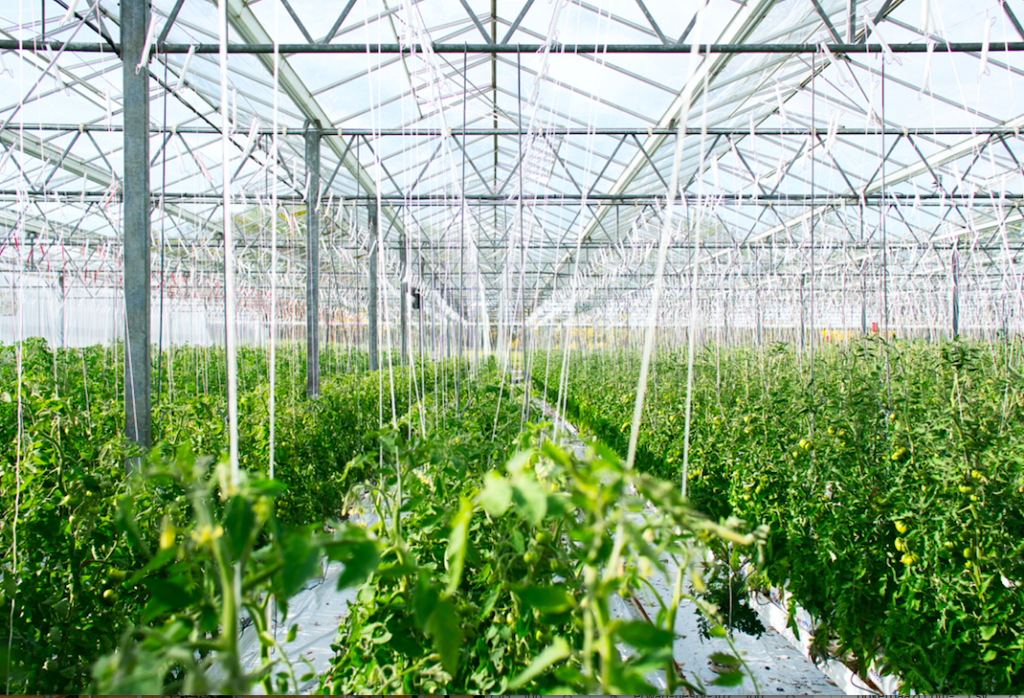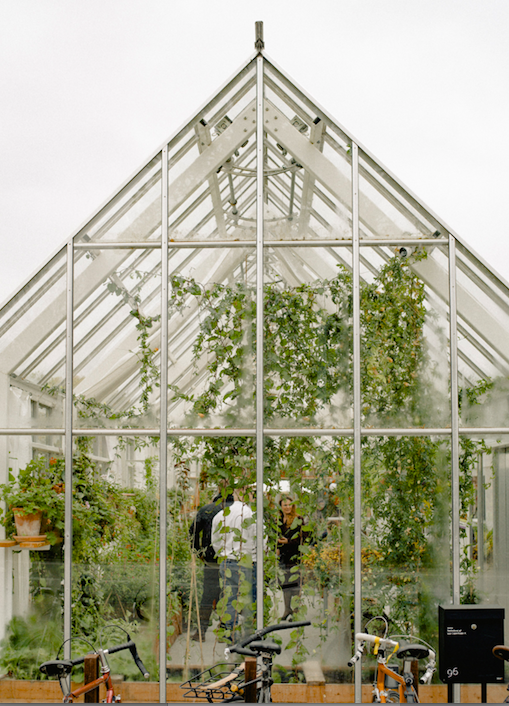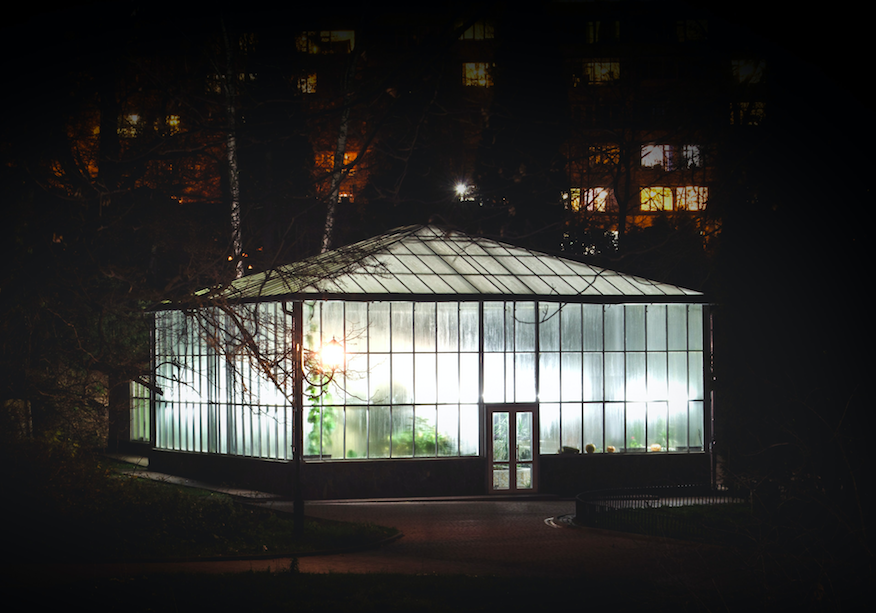Greenhouse Farming is the technique of farming where crops are cultivated in a curated set-up in, a greenhouse ecosystem environment. Cultivation in greenhouses is a practice that has made it easy for farmers to increase their yield while at the same time improving the quality of their produce. Isolating the plants in the micro-ecosystems ensures that under the ideal conditions the plants are made to grow in a healthy, strong, and beautiful environment.

Setting up a greenhouse
Setting up a greenhouse has a lot of parts to it. Done wrong it can go terribly wrong. But make no mistake it is a good investment. If you choose to go ahead with Greenhouse, you’d have to be cognizant of a few details. First, the location.
Finding the best position at your house/farm, to install your greenhouse is important. One of the key variables that need to be in place is the sunlight. Sunlight should come in from all sides, as much as possible as it is a crucial part of the greenhouse’s infrastructure and system.
If you cannot locate a spot with good sunlight, you might need to reconsider. You might have seen greenhouses getting in the light from all directions. Ideally, the premise of greenhouse factors is in the abundance of light.
if you are at a place that has less light, consider growing your plants and vegetables which require comparatively less sunlight.

You should have a greenhouse that is not located in between buildings or other structures- it should be built carefully away from structures that block sunlight.
Greenhouse Base:
It is critical that you make your greenhouse stand on a robust, solid, well-built greenhouse base.
Greenhouse Bases are usually made of bricks, or railway sleepers, concrete blocks, or concrete mix, or other timber. It is important that your Greenhouse base is perfect for the overall structure of your greenhouse. It must ideally be according to the exact dimensions of the greenhouse structure and should be completely flat.
Greenhouse Drainage/Soak-away:
An important point to consider is at the point of greenhouse drainage, many plants that we grow in a greenhouse need excellent drainage, so it is a little something to consider while you install your greenhouse
You should add some basic drainage channels or a soak-away as part of the building process. Indeed a larger greenhouse or a scheme of houses will benefit from a well-planned and constructed soak-away and should be factored into any hard landscaping that you do.
Also, consider the position of the drainage. It should not be along the path to the greenhouse. A damp environment of standing water will help attract the midges and mosquitoes, so if possible it does not want to be where you are gardening or walking near very much of the time.
The soak-away can be created as a feature of the garden and again depending on where it is in relation to the greenhouse a tree could be planted there to take up the water. I planted a small orchard in the part of the garden that my greenhouse drains and this is definitely a worthwhile consideration to increase profit from the fruit.
Just remember it needs to be far enough away not to adversely shade the greenhouse or down a slope to lessen height is ideal.
Another alternative is to plant the area with water marginal plants and make an attractive feature of it that way. There should not be a huge amount of wastewater runoff, but because regular watering and good drainage are essential there will certainly be some. Careful drainage can ensure that it is not near to the greenhouse and the trick is to utilize the opportunity of the water for something you want rather than have it unused and wasted.
Greenhouse Benching:
The first recommendation is to have benching down one side of the greenhouse. This will be used for planting, potting, and bringing on seeds and can also be utilized to house the smaller fast cropping vegetables like cress or sprouting grains.

Low-growing crops like lettuce or spring onions will grow successfully here and sometimes it is advantageous to have them at waist height rather than always bending down.
The underneath area of benches is a good place to put seeds that need a darker area to germinate and sometimes they will still need covering.
Tools and spare bags of compost can also be stored under the benches. Benches should be of rugged wood with slats to allow a small amount of drainage, although I find that grooved decking is far superior for allowing draining and value because it lasts so much longer.
It is also a good idea to have some area of the bench that meshed for growing seeds that need fast drainage and it is possible to build this into the structure or to have separate benches of different types. However, remember if you are utilizing a mesh-based area that there will be quite a lot of water running straight onto whatever is below.
Greenhouse Power:
Use of Electric power is absolutely essential- this can be either from the mains, a solar unit, or through the use of a 12-volt battery.
If your area is favorable, you could even have a small wind turbine to fully charge the battery and they, have a wind-powered greenhouse.
No matter what method you choose, power is essential for running lighting, propagator, fans, and potentially a powerful heat source.
Greenhouse Ventilation:
Your greenhouse should always come with one or more opening vents (windows) to let the passage of good airflow that would help prevent any overheating. A simple auto-vent system is a good way to ensure that the usefulness of the vent is maximized.
And this is a simple gas strut that you set to rise at a certain temperature and close when the temperature starts to drop. These really are a very useful addition to the time-strapped gardener or for peace of mind when you are out.
Also, consider the louver window ( Jalousie window ) they draw in cooler air at the base of the greenhouse and are designed to ensure a good, constant airflow that gives better growing conditions. They really are worth the extra to install from the start and their usefulness will repay the purchase cost.
You can also check our detailed instructions article on “How to keep a Greenhouse cool in the desert or Hot Summer?“
Greenhouse Thermometer:
Your greenhouse needs a thermometer. A thermometer is an important tool for the operations of your greenhouse, that way you can keep a check if it really is as hot in there as you think and by knowing the temperature the conditions can be altered accordingly.
You should most certainly consider installing a temperature-controlled fan that would start circulating the air when the temperatures of the greenhouse rise above a given threshold.
On the other hand, you can also have temperature-controlled heaters installed which would turn on when the temperature of the greenhouse falls below a certain temperature which is usually set by the thermostat.
Ground Surface:
The ground surface is usually a matter of choice, but then what comes out as a favorite.is having some slabs down the center for a small greenhouse or around a central bench in a larger greenhouse.
Not only are these safe and easy to walk on, but they will capture heat during the day and slowly lose the heat whilst warming the greenhouse air overnight.
Additionally in very hot weather, watering the slabs will cause the water to evaporate- thereby bringing moisture into the air and cooling the area, while also creating humidity if the air becomes too dry.
We hope this article helped you understand how you should go about setting up your greenhouse. All the best and more power to you!

